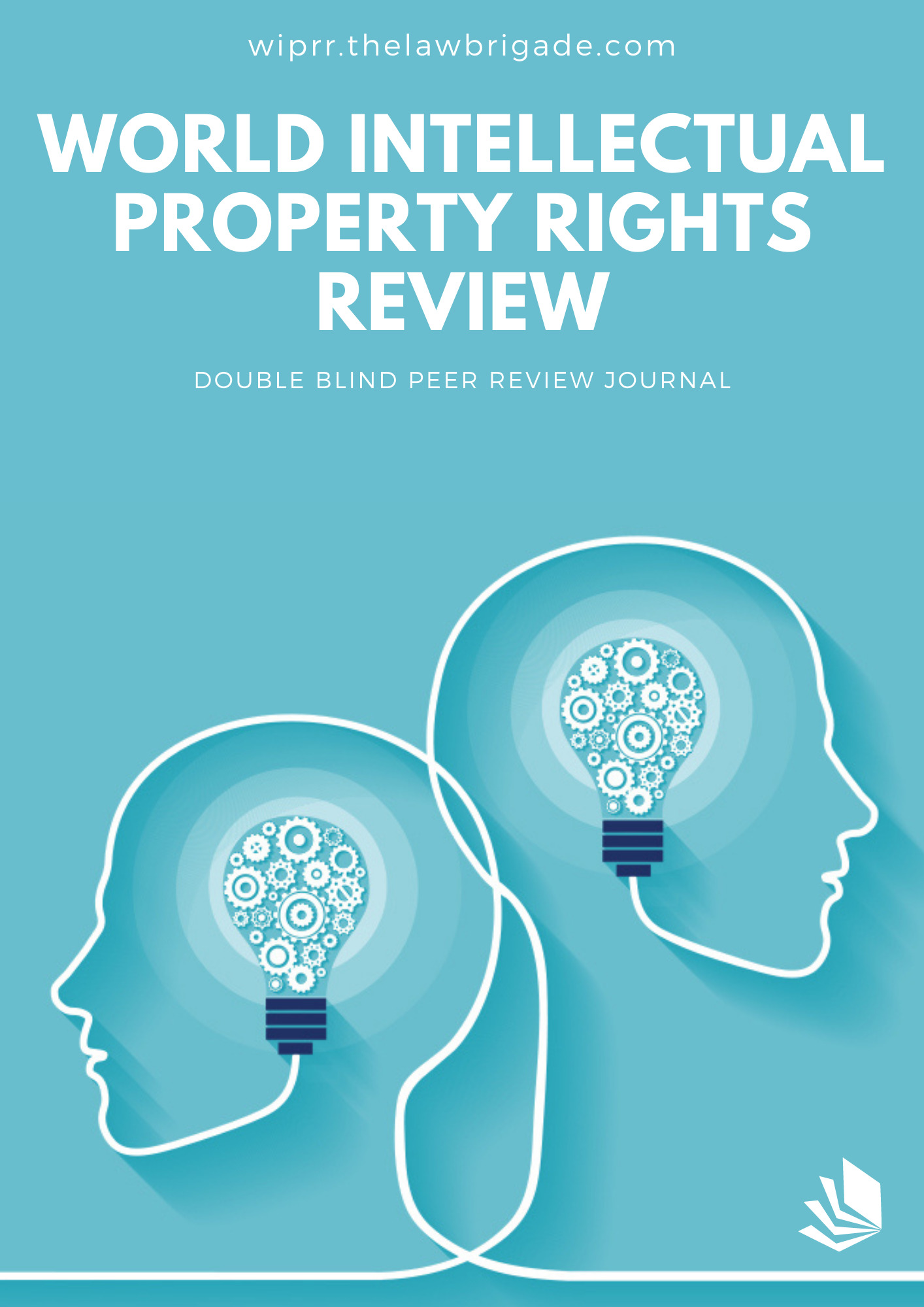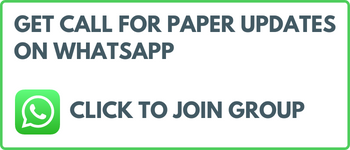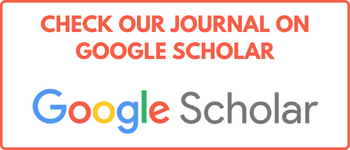On the following pages, The Law Brigade Publisher (hereinafter referred to as the publisher) provides practical guidance to Journal Editors and Society & Publishing Partners which helps manage the repercussions potentially arising from publishing work which could be in breach with the codes of conduct.
Introduction
Researchers should conduct their research – from research proposal to publication – in line with best practices and codes of conduct of relevant professional bodies and/or national and international regulatory bodies. In rare cases, it is possible that ethical issues or misconduct could be encountered in your journal when research is submitted for publication.
Important! We advise you to contact the Journal Manager if you are dealing with a (potential) case of publishing misconduct.
Committee on Publication Ethics
Although The Law Brigade Publisher is not a member of the Committee on Publication Ethics (COPE) and does not subscribe to its principles on how to deal with acts of misconduct. The publisher strongly recommends journal editors to join COPE and thereby adhere to the principles of COPE, committing to investigate allegations of misconduct and to ensure the integrity of research.
For more information see Core Practices for Journal Editors and/or visit the COPE website.
For joining please contact our Journal Manager.
Developing a publishing ethics policy for our journal
Almost every step in the publishing process involves important ethical principles. Having clear statements on these issues can encourage responsible publication practices.
A clear description of ethical principles will help manage author expectations and will help manage situations that may arise if these statements have not been adhered to by authors. Below you will find a few of the most important ethical principles.
Clear guidelines on submission of the work
- that the work has not been published before
- that the work is not under consideration elsewhere
- that copyright has not been breached in seeking its publication
- that the publication has been approved by all co-authors and responsible authorities at the institute or organization where the work has been carried out
What type of content is or is not acceptable for publication
For example:
- are translations of previously published articles acceptable?
- are extended versions of conference proceedings acceptable?
In these cases, the author is expected to give full disclosure for transparency reasons but it could also be necessary for the author to seek approval from the original publisher.
It should also be noted that different disciplines have different expectations. When authors cross over to other disciplines, make sure they are aware of the explicit policies of the journal in order to manage their expectations. Please note there are no universally agreed rules or regulations.
Guidelines on what constitutes authorship and how proposed changes to authorship are handled
Although there is no universal definition of what constitutes authorship it is recommended that authors adhere to the guidelines for authorship that are applicable in their specific research field. In the absence of specific guidelines it is recommended to adhere to the following guidelines:
- made substantial contributions to the conception or design of the work; or the acquisition, analysis, or interpretation of data; or the creation of new software used in the work;
- drafted the work or revised it critically for important intellectual content;
- approved the version to be published; and
- agree to be accountable for all aspects of the work in ensuring that questions related to the accuracy or integrity of any part of the work are appropriately investigated and resolved.
Description of the peer review process
Peer review is fundamental in ensuring the integrity of the publication process and can flag potential misconduct at an early stage.
COPE has developed ethical guidelines for peer reviewers which can be used as a reference for providing guidance to peer reviewers.
The inclusion of the necessary ethical statements if required
Certain Abstracting & Indexing services insist on compliance with the ethical requirements Conflict of Interest, Human and Animal Rights and Informed Consent and require authors to declare compliance in their articles.
Note! Special issues handled by Guest Editors often form an important part of the content. Please make sure that Guest Editors adhere to the submission process, peer review process and ethical standards of the journal.
Ethical issues and what to do when you are encountering possible misconduct?
It should be noted there are two distinct situations: serious fraud or errors. Errors could be due to negligence (for example statistical errors) or honest errors which are part of the normal course of doing research. It is therefore important to treat potential cases with care as academic careers could be at risk.
Five steps to follow when encountering possible misconduct:
- Remain a neutral player and treat all potential misconduct cases confidentially
- Keep records of written communication including the allegation and the evidence of the complainant
- Raise the issue with the accused (co-)author in a timely manner
- Assess what exactly has happened (fact-finding) and be transparent and final about decisions
Ethical issues
Six fundamental ethical issues have been defined, and procedures for responding to misconduct have been outlined below. Please note that these guidelines are not intended to provide or substitute legal advice. Each ethical issue is followed by recommended actions as advised by COPE for Journal Editors and when available additional reading has been added. Clicking on the link will give you a flowchart with the actions stipulated. Please note that flowcharts are making a distinction between ethical issues in a submitted manuscript and published article.
Note! Always contact our Publishing Editor if you are confronted with an ethical issue.
Data fabrication / Data falsification
Data fabrication: This concerns the making up of research findings.
Data falsification: Manipulating research data with the intention of giving a false impression. This includes manipulating images (e.g. micrographs, gels, images), removing outliers or “inconvenient” results, changing, adding or omitting data points, etc.
With regard to image manipulation, it is allowed to technically improve images for readability. Proper technical manipulation refers to adjusting the contrast and/or brightness or colour balance if it is applied to the complete digital image (and not parts of the image). Any technical manipulation by the author should be notified in the cover letter to the Journal Editor upon submission. Improper technical manipulation refers to obscuring, enhancing, deleting and/or introducing new elements into an image. Generally, if an author’s figures are questionable, it is suggested to request the original data from the authors.
For more information on image manipulation see also the following useful links:
Duplicate submission/publication and redundant publication
Duplicate submission/publication: This refers to the practice of submitting the same study to two journals or publishing more or less the same study in two journals. These submissions/publications can be nearly simultaneous or years later.
Redundant publication (also described as ‘salami publishing’): this refers to the situation that one study is split into several parts and submitted to two or more journals. Or the findings have previously been published elsewhere without proper crossreferencing, permission or justification. “Self-plagiarism” is considered a form of redundant publication. It concerns recycling or borrowing content from previous work without citation. This practice is widespread and might be unintentional. Transparency by the author on the use of previously published work usually provides the necessary information to make an assessment on whether it is deliberate or unintentional.
Note! Translations of articles without proper permission or notification and resubmission of previously published Open Access articles are considered duplications.
Duplication of text and/or figures (plagiarism)
Plagiarism occurs when someone presents the work of others (data, text, or theories) as if it was his/her own without proper acknowledgement. There are different degrees of plagiarism.
The severity is dependent on various factors: the extent of copied material, originality of copied material, position/context/type of material and referencing/attribution of the material used.
Every case is different and therefore decisions will vary per case. Ask yourself the following question: Does it concern an honest mistake or is there an intentional deviation from the publishing norm? Please note there are many grey areas between honest, questionable and fraudulent practices.
Whilst reviewing the case consider the following factors:
- Author seniority. Junior authors may be asked to paraphrase the copied text if it is believed that they are genuinely not aware that copying phrases is inappropriate. It is expected that a senior author should know better
- The cultural background could be an indication for potentially different behaviours concerning the amount of copying which could be seen as plagiarism
The following listing is designed to make you aware of the various possibilities concerning plagiarism:
- Verbatim copying of another’s work and submitting it as one’s own.
- Verbatim copying of significant portions of text from a single source.
- Mixing verbatim copied material from multiple sources (“patchwork copying”). This could range from 1 or 2 paragraphs to significant portions consisting of several paragraphs.
- Changing keywords and phrases but retaining the essential content of the source as a framework.
- Rephrasing of the text’s original wording and/or structure and submitting it as one’s own.
- Mixing slightly rephrased material from multiple sources and presenting what has been published already as new.
- The work is cited, but the cited portions are not clearly identified. This can be combined with copied parts of the text without citation.
However for review papers, the above is not directly applicable. Review papers are expected to give a summary of the existing literature. Authors should use their own words with the exception of properly quoted and/or cited texts and the work should include a new interpretation.
For more information on this topic; see Avoiding plagiarism, self-plagiarism, and other questionable writing practices: A guide to ethical writing\”> by M. Roig (guidelines developed with support from The Office of Research Integrity) and Text Recycling Guidelines from COPE.
Authorship issues
COPE has written an article with advice on how to spot potential authorship problems. Most authorship problems have to do with authorship without the author’s knowledge and unacknowledged authorship.
Undeclared Conflict of Interest (CoI)
A conflict of interest is a situation in which financial or other personal considerations from authors or reviewers have the potential to compromise or bias professional judgment and objectivity. Authors and reviewers should declare all conflicts of interest relevant to the work under consideration (i.e. relationships, both financial and personal, that might interfere with the interpretation of the work) to avoid the potential for bias.
How to correct the literature?
In some cases, it might be necessary to correct the literature in order to maintain the integrity of the research literature. The COPE Retraction Guidelines describe exactly when and which option should be used.
Erratum / Correction – Journal Editors should consider issuing an erratum if:
- a small portion of an otherwise reliable publication proves to be misleading (especially because of honest error)
- the author/contributor list is incorrect
Retraction Note– Journal Editors should consider retracting a publication if:
- there is clear evidence that the findings are unreliable, either as a result of misconduct or honest error
- the findings have previously been published elsewhere without proper cross-referencing, permission or justification
- it constitutes plagiarism
- it reports unethical research
The text for retraction notes can be submitted/written by the author(s), Journal editor, Society or jointly.
Expression of Concern– Journal Editors should consider issuing an expression of concern if:
- there is inconclusive evidence of research or publication misconduct by the authors
- there is evidence that the findings are unreliable but the authors’ institution will not investigate the case
- it is believed that an investigation into alleged misconduct related to the publication either has not been or would not be, fair and impartial or conclusive
- an investigation is underway but a judgment will not be available for a considerable time
Note! In all cases, please contact your Publishing Editor first.
Should an author be banned and when?
Banning is not a policy endorsed by COPE. COPE advises that the matter of punishment should reside with the author’s institute. Publishers are expected to correct the literature. It is, however, publisher’s view that in exceptional cases (e.g. in cases of repeat offenders or authors using abusive language, authors threatening the publisher, authors defaulting on payment after failing to withdraw their submission within the Article Withdrawal Period and many more case similar to this nature) the Editor-in-Chief/Editorial Board has the right to refuse to review/accept papers from these authors.
What to do when you are encountering a severe plagiarism case?
For severe plagiarism cases (for example plagiarism by the same group of authors affecting multiple Law Brigade journals or journals from other publishers or cases that might attract the attention of the media) or other serious unethical practices, you are advised to inform your Publishing Editor who might seek the advice from the Journal Management Group.
What to do when misconduct is beyond the means of Journal Editors to investigate?
If allegations of misconduct cannot be resolved or if the response received from the parties involved is unsatisfactory or if the misconduct is beyond the means of the Journal Editor and Board to investigate (often occurring in cases of data fabrication/falsification, stolen data, and author disputes amongst others), you are advised to refer the case to the author’s institution (or employer or other regulatory body) and request an investigation.
Plagiarism prevention with CrossCheck
The web-based tool can be used in the editorial process to identify matching text but it cannot, on its own, identify plagiarism. Manual examination of the matching text is still required and judgment used to identify if plagiarism has occurred or not.
Plagiarism detection at an early stage may be helpful to:
- educate authors who are less familiar with the ethics of publishing;
- reduce the workload for editors and reviewers if ethical issues are captured at an early stage.
Further resources that are helpful in order to be able to deal with potential misconduct
Next, to the flowcharts, COPE has a searchable database that contains over 400 cases with advice from the Committee and follow-up information. This database can provide helpful insights into how cases were handled in order to help solve your own case.
Sample letters for contacting relevant parties are available from:
If you have trouble resolving a case taking into account the COPE guidelines, flowcharts and database, contact our Publishing Editor for further advice. Dependent on the issue, your Publishing Editor might seek advice from the Journal Management Group.
Before taking any follow-up steps, always inform our Publishing Editor.





